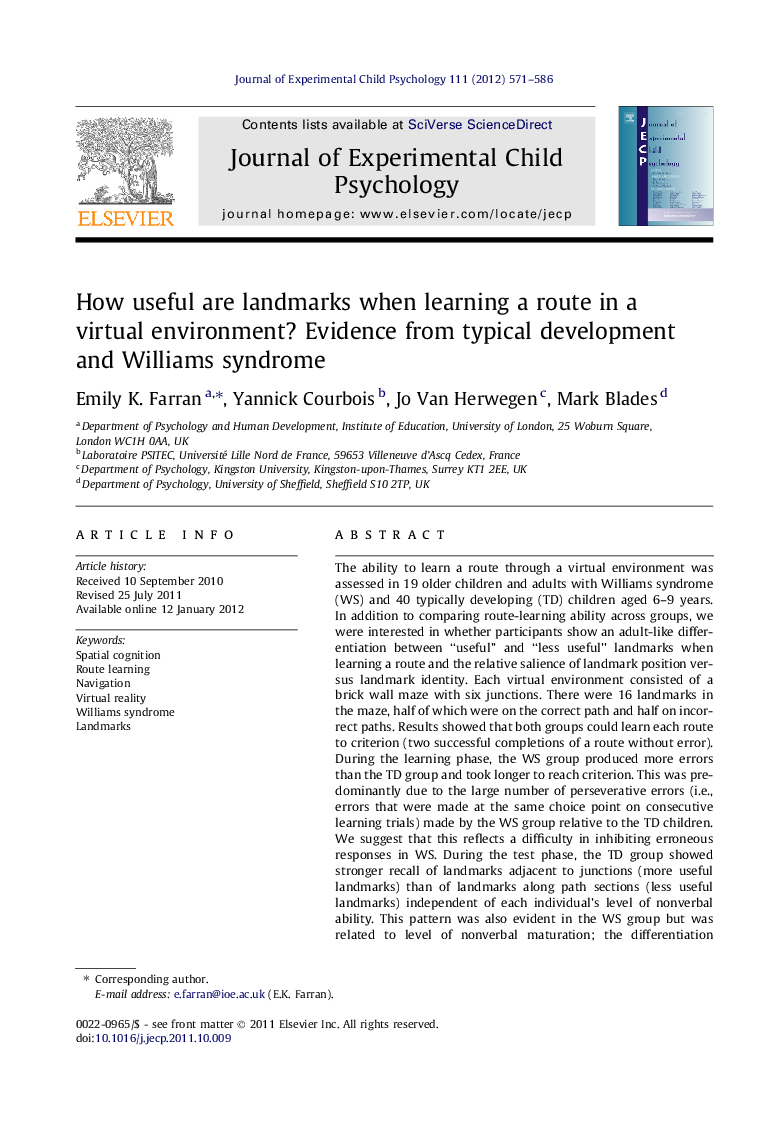| کد مقاله | کد نشریه | سال انتشار | مقاله انگلیسی | نسخه تمام متن |
|---|---|---|---|---|
| 918265 | 919467 | 2012 | 16 صفحه PDF | دانلود رایگان |

The ability to learn a route through a virtual environment was assessed in 19 older children and adults with Williams syndrome (WS) and 40 typically developing (TD) children aged 6–9 years. In addition to comparing route-learning ability across groups, we were interested in whether participants show an adult-like differentiation between “useful” and “less useful” landmarks when learning a route and the relative salience of landmark position versus landmark identity. Each virtual environment consisted of a brick wall maze with six junctions. There were 16 landmarks in the maze, half of which were on the correct path and half on incorrect paths. Results showed that both groups could learn each route to criterion (two successful completions of a route without error). During the learning phase, the WS group produced more errors than the TD group and took longer to reach criterion. This was predominantly due to the large number of perseverative errors (i.e., errors that were made at the same choice point on consecutive learning trials) made by the WS group relative to the TD children. We suggest that this reflects a difficulty in inhibiting erroneous responses in WS. During the test phase, the TD group showed stronger recall of landmarks adjacent to junctions (more useful landmarks) than of landmarks along path sections (less useful landmarks) independent of each individual’s level of nonverbal ability. This pattern was also evident in the WS group but was related to level of nonverbal maturation; the differentiation between recall of junction and path landmarks increased as nonverbal ability increased across WS participants. Overall, the results demonstrate that individuals with WS can learn a route but that the development of this ability is atypical.
► The ability to learn a route through a virtual environment (VE) was assessed.
► A Williams syndrome (WS) group and typically developing (TD) children took part.
► The WS group made more errors than TD children, and showed atypical error patterns.
► TD children showed stronger recall of junction landmarks than those on paths.
► This pattern was evident in the WS, but was related to level of non-verbal ability.
Journal: Journal of Experimental Child Psychology - Volume 111, Issue 4, April 2012, Pages 571–586